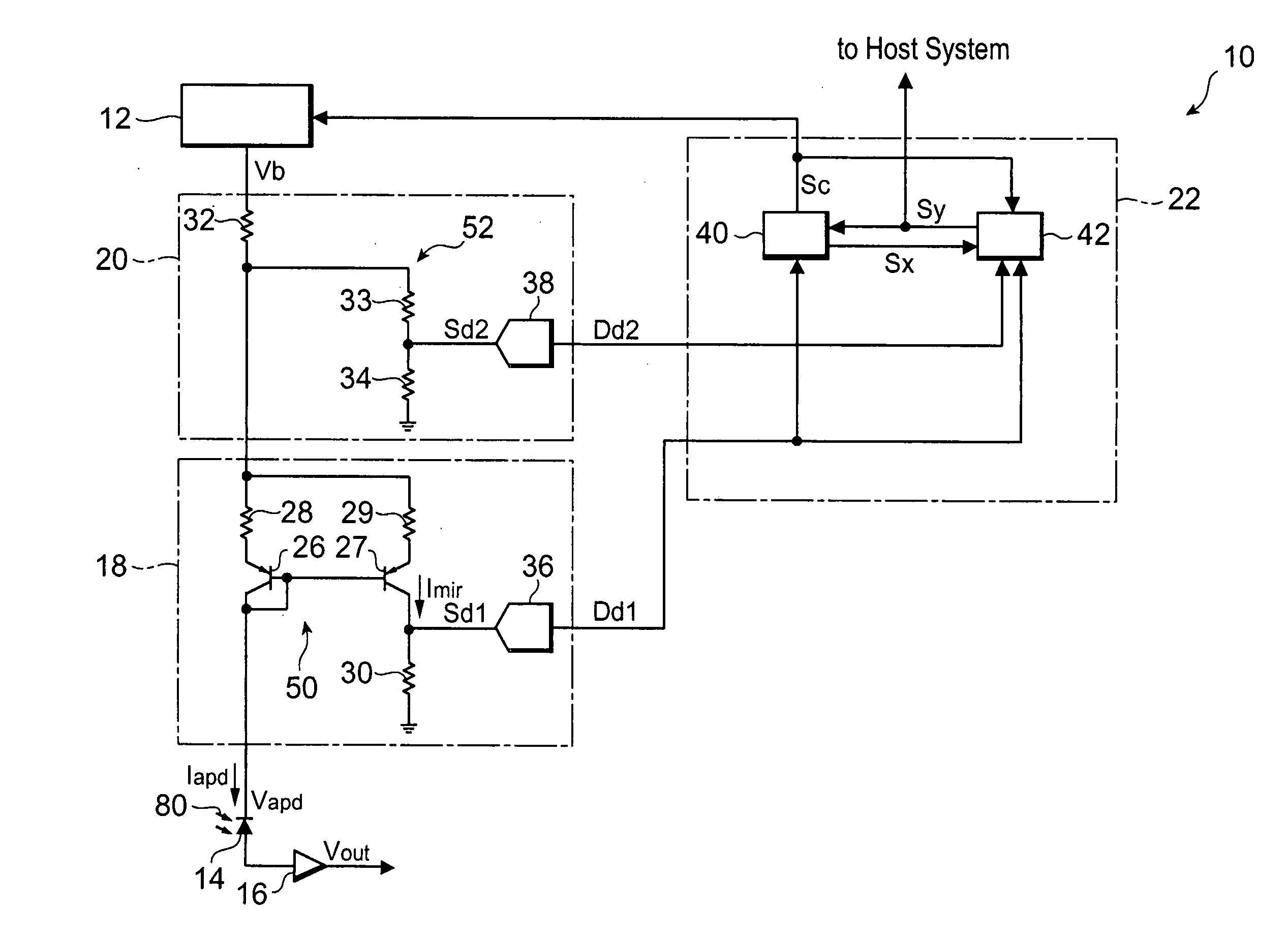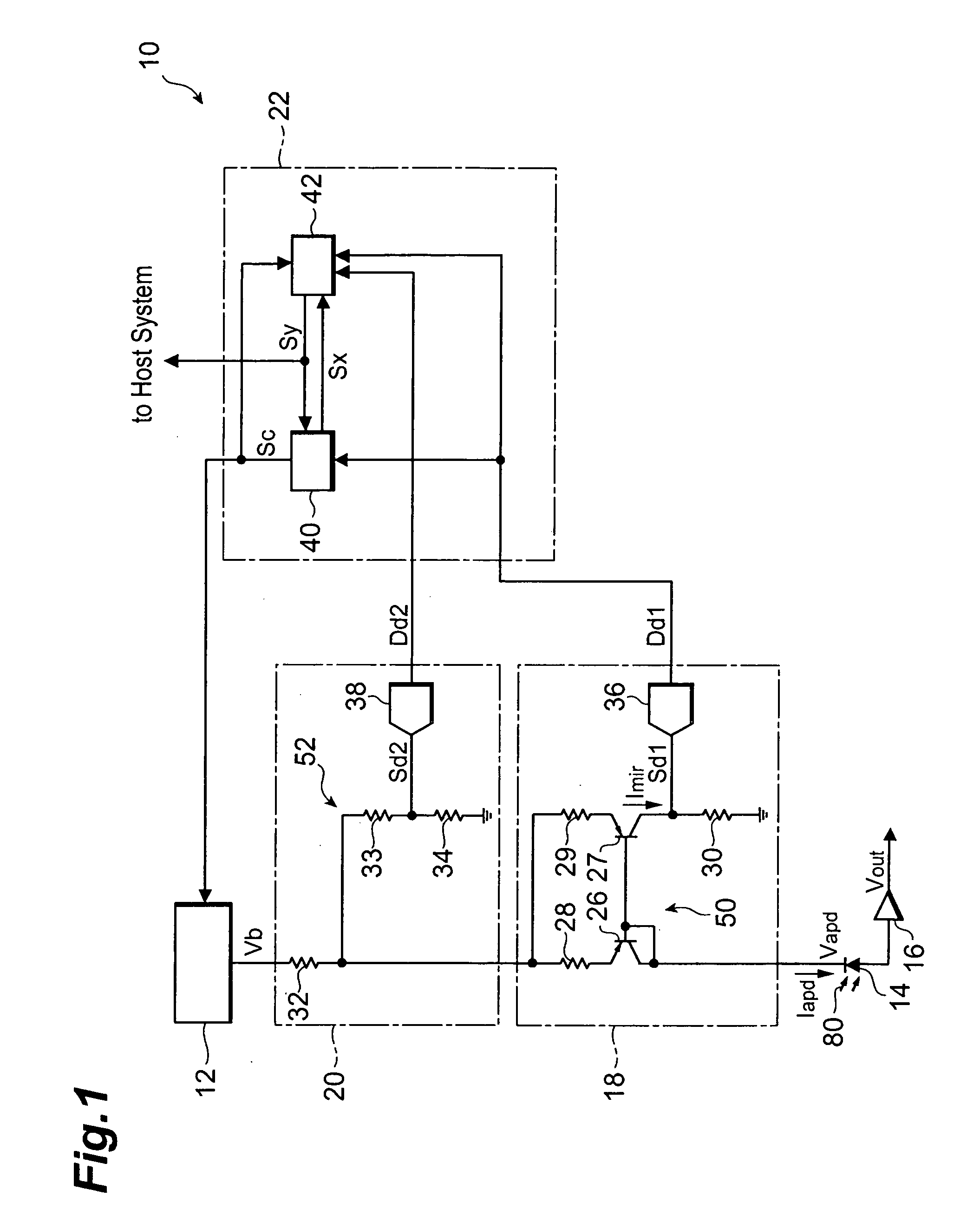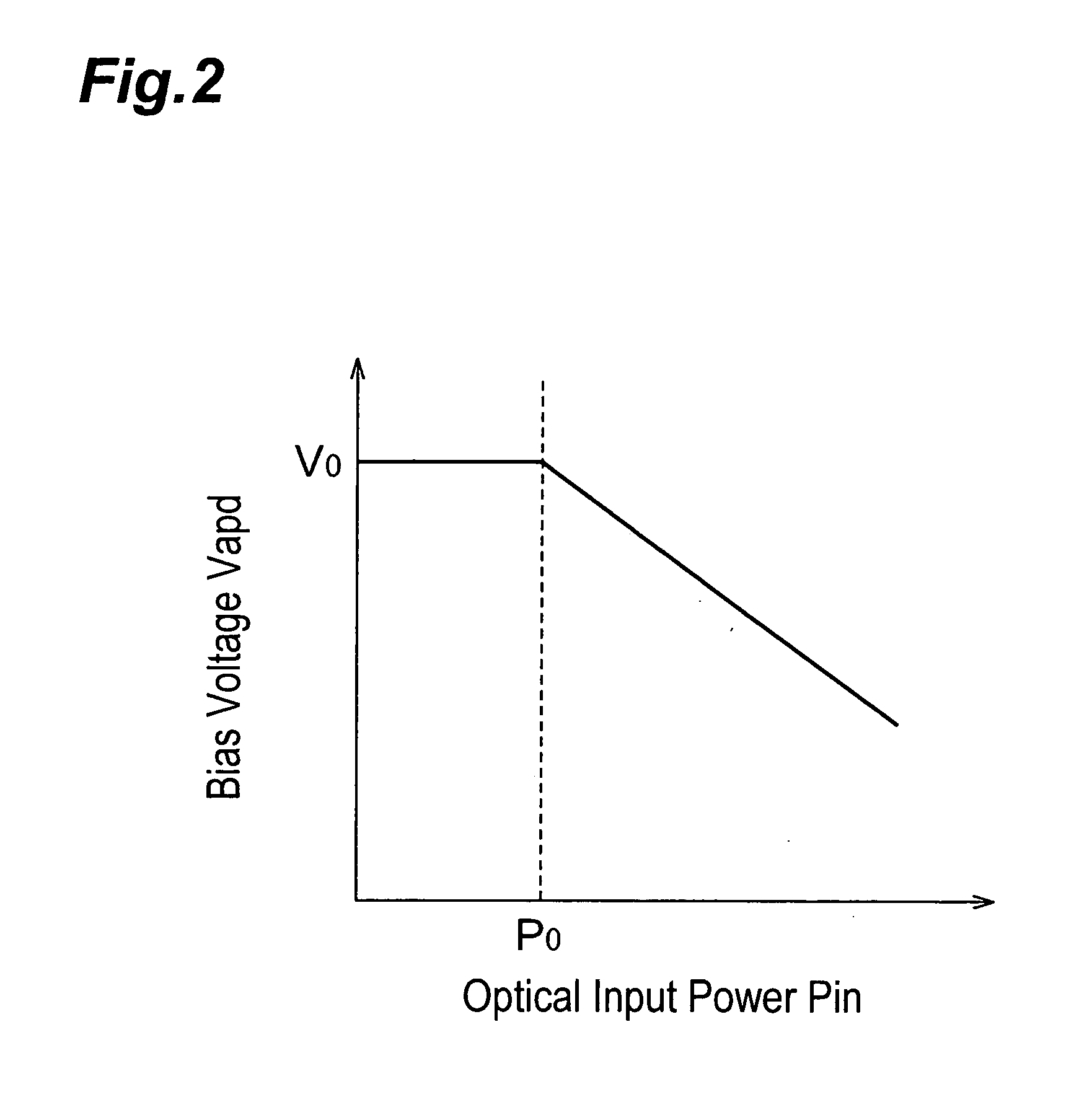Optical receiver having bias circuit for avalanche photodiode with wide dynamic range
a technology of optical receiver and avalanche, which is applied in the field of optical receivers, can solve problems such as saturation of the output of a/d-c, and achieve the effect of low optical input power and high accuracy
- Summary
- Abstract
- Description
- Claims
- Application Information
AI Technical Summary
Benefits of technology
Problems solved by technology
Method used
Image
Examples
first embodiment
[0022] (First Embodiment)
[0023]FIG. 1 is a circuit diagram showing the configuration of an optical receiver according to the first embodiment. The optical receiver 10 has a bias generator 12, an avalanche photodiode (which will be referred to hereinafter as “APD”) 14, a trans-impedance amplifier 16, a first current sensor 18, a second current sensor 20, and a controller 22.
[0024] The bias generator 12 is a voltage source that applies a voltage Vb to the APD 14 in the reverse direction. The output Vb is determined according to a control signal Sc sent from the controller 22. As guided from the bias generator 12 through the two current detecting circuits 18, 20, a bias voltage Vapd is applied to the APD 14. The APD 14 detects an optical signal 80 and converts it into a photocurrent Iapd at a multiplication factor M dependent on the bias voltage. The trans-impedance amplifier 16 for converting the photocurrent Iapd into a voltage signal Vout is connected to the anode of the APD 14.
[0...
second embodiment
[0050] (Second Embodiment)
[0051]FIG. 5 is a circuit diagram showing the configuration of an optical receiver according to the second embodiment. This optical receiver 10a is different from the optical receiver 10 in that the optical receiver 10a has first and second current sensors 18a, 20a resulting from modification of those 18, 20, instead thereof, and in that it has a new controller 22a instead of the controller 22.
[0052] The first current sensor 18a has an amplifier 64 between the sensing resistor 30 and the A / D-C 36. The amplifier 64 amplifies the voltage generated in the sensing resistor 30 at a predetermined amplification factor to generate a signal Sd1. The A / D-C 36 converts the signal Sd1 into a first detected signal Dd1 and feeds it to the controller 22a.
[0053] The output of the amplifier is clamped at a supply voltage supplied to the amplifier. Namely, the amplifier serves as an amplitude limiting circuit. Assuming that the supplied voltage of amplifier 64 is approxima...
PUM
 Login to View More
Login to View More Abstract
Description
Claims
Application Information
 Login to View More
Login to View More - R&D
- Intellectual Property
- Life Sciences
- Materials
- Tech Scout
- Unparalleled Data Quality
- Higher Quality Content
- 60% Fewer Hallucinations
Browse by: Latest US Patents, China's latest patents, Technical Efficacy Thesaurus, Application Domain, Technology Topic, Popular Technical Reports.
© 2025 PatSnap. All rights reserved.Legal|Privacy policy|Modern Slavery Act Transparency Statement|Sitemap|About US| Contact US: help@patsnap.com



